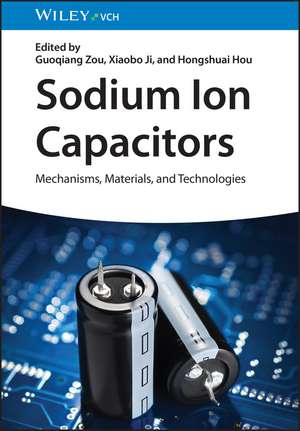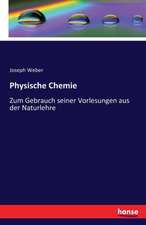Sodium Ion Capacitors – Mechanisms, Materials and Technologies
Autor G Zouen Limba Engleză Hardback – 24 oct 2023
Preț: 689.94 lei
Preț vechi: 896.04 lei
-23% Nou
Puncte Express: 1035
Preț estimativ în valută:
132.03€ • 137.01$ • 110.36£
132.03€ • 137.01$ • 110.36£
Carte disponibilă
Livrare economică 19-25 februarie
Livrare express 07-13 februarie pentru 53.22 lei
Preluare comenzi: 021 569.72.76
Specificații
ISBN-13: 9783527350377
ISBN-10: 3527350373
Pagini: 272
Dimensiuni: 177 x 253 x 22 mm
Greutate: 0.67 kg
Editura: Wiley Vch
Locul publicării:Weinheim, Germany
ISBN-10: 3527350373
Pagini: 272
Dimensiuni: 177 x 253 x 22 mm
Greutate: 0.67 kg
Editura: Wiley Vch
Locul publicării:Weinheim, Germany
Notă biografică
Guoqiang Zou, associate professor, master tutor, Excellent tutor of the Chinese University Student Knowledge and Action Promotion Program, Excellent tutor of Central South University; mainly engaged in the research of new energy materials (lithium/sodium ion battery/capacitor electrode materials) and electrochemistry. Published more than 60 SCI papers in the past five years, H index 34, has been cited more than 3540 citations, 20 Chinese invention patents have been authorized.
Xiaobo Ji, Associate Dean; Professor and Doctoral Supervisor of Central South University. He received a Ph.D. from Oxford University and later did post-doctoral research at MIT. His main research fields include new energy materials and devices and advanced energy storage technology. He has published more than 280 SCI papers in international journals such as Advanced Materials, Angewandte Chemie, and has been cited more than 16,000 times, with an H index of 68. 52 Chinese invention patents have been authorized to him.
Hongshuai Hou is an associate professor at College of Chemistry and Chemical Engineering, Central South University. He received Ph.D. at Central South University in 2016. His current research interests are electrochemistry and key materials for electrochemical energy storage devices.
Xiaobo Ji, Associate Dean; Professor and Doctoral Supervisor of Central South University. He received a Ph.D. from Oxford University and later did post-doctoral research at MIT. His main research fields include new energy materials and devices and advanced energy storage technology. He has published more than 280 SCI papers in international journals such as Advanced Materials, Angewandte Chemie, and has been cited more than 16,000 times, with an H index of 68. 52 Chinese invention patents have been authorized to him.
Hongshuai Hou is an associate professor at College of Chemistry and Chemical Engineering, Central South University. He received Ph.D. at Central South University in 2016. His current research interests are electrochemistry and key materials for electrochemical energy storage devices.
Cuprins
INTRODUCTION CHARACTERISTIC OF SICs DEVICES Basic Features Working Principle Equations FUNDAMENTAL UNDERSTANDING OF SICs MECHANISM EDLC-Type Mechanism and Battery-Type Mechanism of SIBs Pseudocapacitance Mechanism CLASSIFICATION OF SICs CELL CONFIGURATIONS Battery-Type Anode and EDLC Cathode SICs Cell Configurations Battery-Type Anode and Pseudocapacitive Cathode SICs Cell Configurations EDLC Anode and Battery-Type Cathode SICs Cell Configurations Pseudocapacitive Anode and Battery-Type Cathode SICs Cell Configurations Capacitive Anode and Hybrid Cathode SICs Cell Configurations CATHODE MATERIALS FOR SODIUM-ION CAPACITORS Introduction EDLC Cathode Materials Pseudocapacitive Cathode Materials Battery-Type Cathode Materials ANODE MATERIALS FOR SODIUM-ION CAPACITORS EDLC Anode Materials Pseudocapacitive Anode Materials Battery-Type Anode Materials Other Novel Materials FLEXIBLE SODIUM-ION CAPACITOR DEVICES Flexible Battery-Type Anode and Capacitive Cathode SICs Cell Configurations Flexible Capacitive Anode and Battery-Type Cathode SICs Cell Configurations Electrolytes in Flexible SICs Devices PRE-SODIATION TECHNOLOGIES Pre-Lithiation in Lithium-Ion Batteries Pre-Sodiation in Sodium-Ion Batteries Pre-Sodiation in Sodium-Ion Capacitors CONCLUSIONS AND FUTURE PERSPECTIVE Definitions and Mechanisms Configurations Electrode Materials Key Technologies Future Perspective









